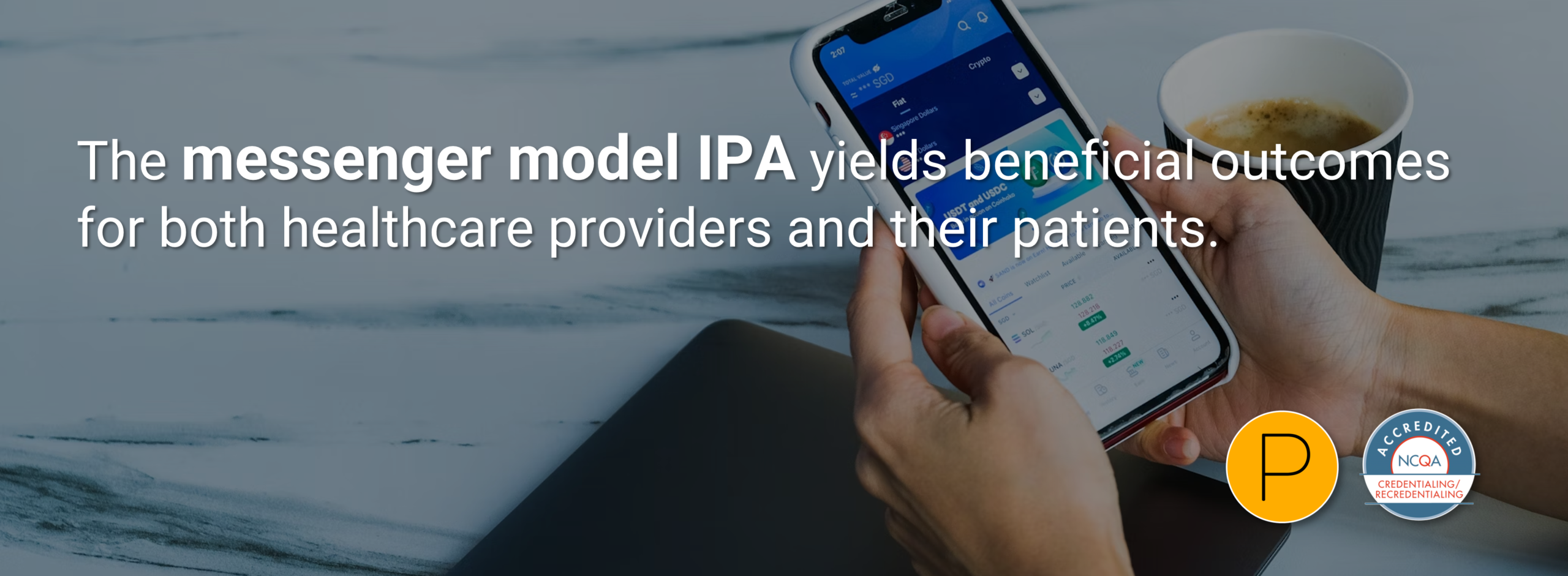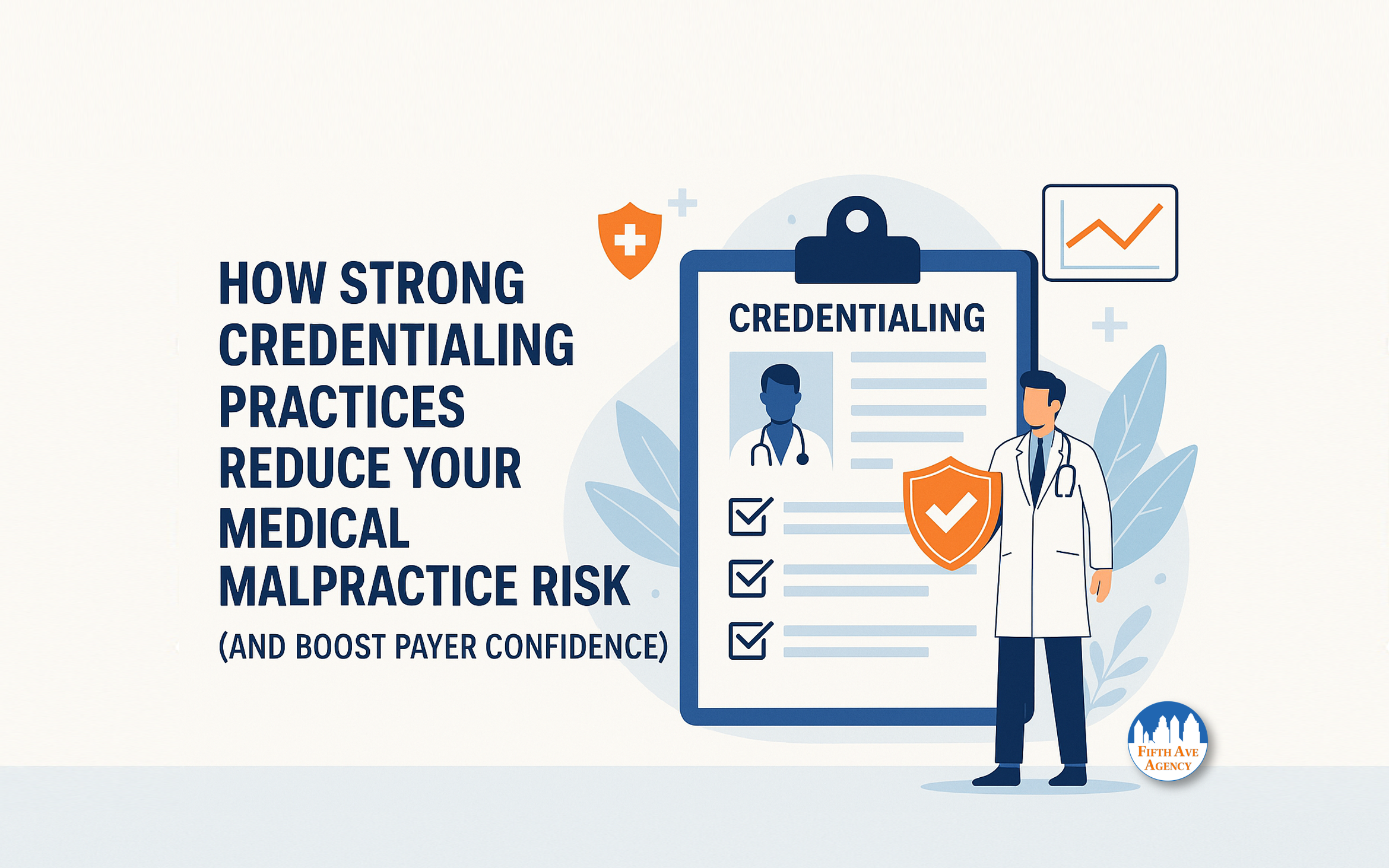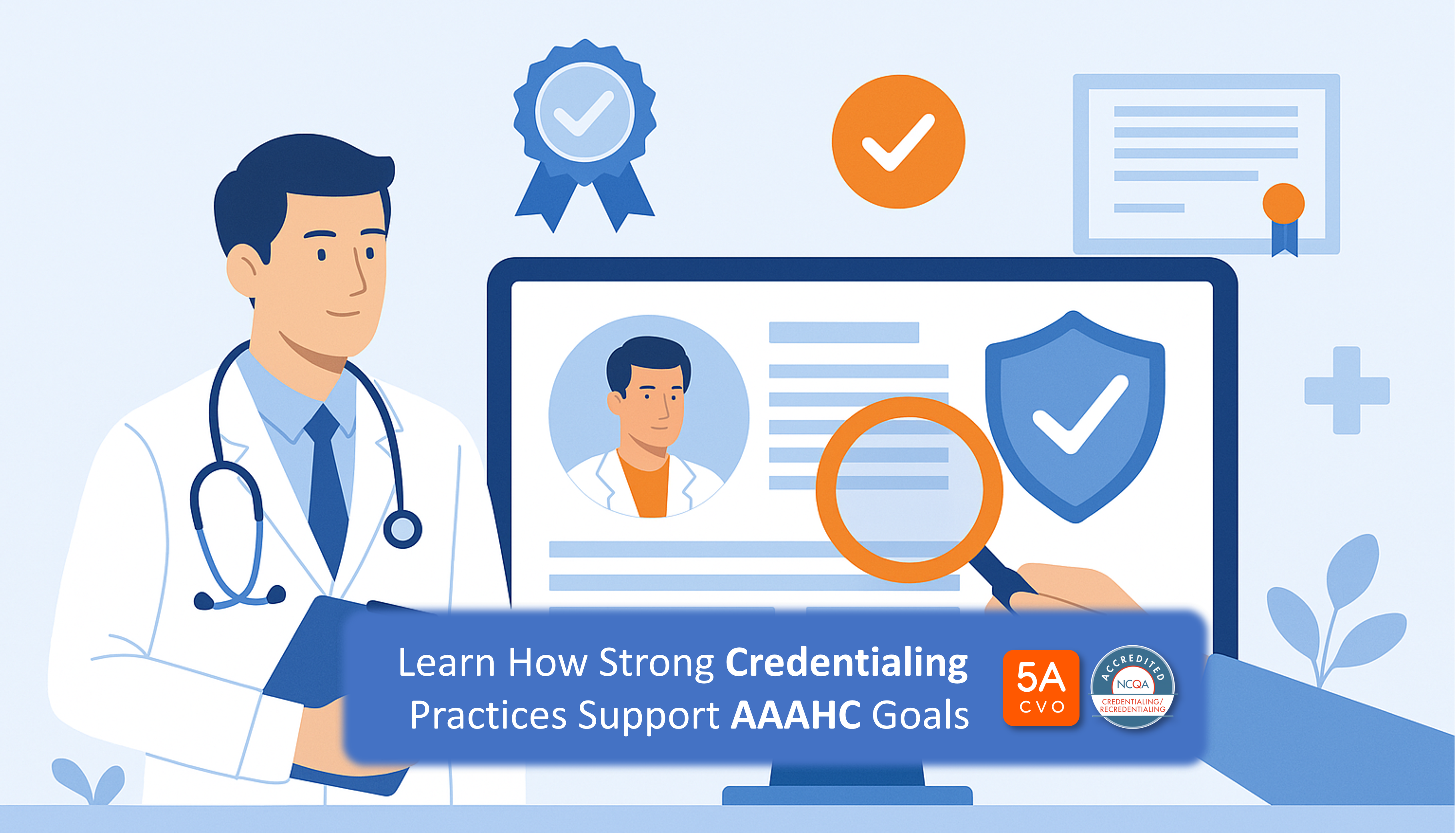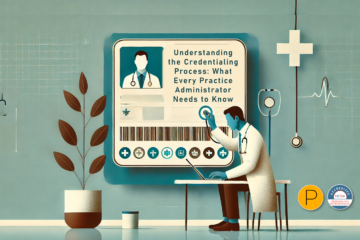Credentialing is crucial for ensuring patient safety and delivering quality care in today’s complex healthcare landscape. Independent Practice Associations (IPAs) have emerged as instrumental facilitators of this process, particularly through the messenger model approach.
This article explores the messenger model IPA in credentialing, exploring its significance, operational mechanisms, benefits, challenges, and impact on healthcare providers and patients.
Understanding the Messenger Model IPA in Credentialing
Credentialing serves as a comprehensive evaluation of a healthcare provider’s qualifications, credentials, and background, essential for upholding standards of care. Within this framework, the messenger model IPA acts as an intermediary, facilitating the exchange of information and documentation between member physicians and credentialing entities, such as insurance companies or healthcare facilities.
This model streamlines the credentialing process, reducing administrative burdens on individual practitioners while ensuring compliance with stringent standards set by payers and regulatory bodies.
Role of the Messenger Model IPA in Credentialing
- Documentation Aggregation and Verification: The credentialing IPA plays a pivotal role in gathering and validating the documentation required for credentialing, including licenses, certifications, training records, and professional references. By centralizing this process and expediting credentialing timelines, the IPA ensures accuracy and completeness.
- Submission and Communication Nexus: Acting as a conduit, the credentialing IPA submits credentialing applications to relevant entities on behalf of its members. It facilitates seamless communication between physicians and payers, manages inquiries, disseminates updates, and resolves any discrepancies that may arise during the process.
- Advocacy and Support Framework: The credentialing IPA advocates for the interests of its member physicians throughout the credentialing journey. It proactively addresses obstacles, advocates for timely approvals, and provides essential support to physicians, ensuring their ability to participate in insurance networks and deliver quality care to patients.
Benefits of the Messenger Model IPA in Credentialing
- Enhanced Efficiency and Time Management: Centralizing credentialing activities through the IPA streamlines processes, reducing administrative overhead and expediting credentialing timelines. Add in delegated credentialing, and this efficiency translates into faster enrollment in insurance networks, ensuring timely access to healthcare services for patients.
- Upholding Quality Standards: The IPA’s involvement in credentialing ensures that physicians meet stringent standards of education, training, and competence, bolstering quality assurance in healthcare delivery. The credentialing IPA reinforces patient safety and care excellence through meticulous credential verification and ongoing compliance monitoring. NCQA Credentialing Accreditation is one of the highest standards in credentialing and can be obtained by the IPA.
- Preservation of Provider Autonomy: The messenger model IPA allows individual physicians to retain autonomy over their clinical practices while leveraging collective resources for credentialing purposes. Physicians maintain control over their practice decisions while benefiting from administrative support provided by the IPA.
- Augmented Patient Access and Choice: The IPA expands patient access to a diverse pool of credentialed healthcare providers by streamlining the credentialing process and facilitating physician enrollment in insurance networks. Patients benefit from a broader range of provider options, enhancing their ability to receive timely and tailored care.
Challenges and Considerations
- Resource Allocation Imperatives: While the messenger model IPA offers significant benefits, establishing and maintaining an effective credentialing infrastructure within the IPA requires substantial resources. This includes investment in personnel, technology, and administrative capacities. IPAs must allocate resources judiciously to ensure the seamless functioning of the credentialing process while balancing financial considerations.
- Regulatory Compliance Complexities: Compliance with regulatory mandates and accreditation standards presents ongoing challenges for IPAs. The healthcare landscape is constantly evolving, with new regulations and standards emerging regularly. IPAs must stay abreast of these changes, ensuring that their credentialing processes remain compliant and adhere to the latest industry standards. This necessitates continuous monitoring, staff training, and adaptation to regulatory shifts.
- Data Security and Confidentiality Concerns: Safeguarding sensitive provider information during credentialing is paramount to maintaining patient trust and confidentiality. To protect confidential information from unauthorized access or breaches, IPAs must implement robust data security measures, including encryption, access controls, and regular audits. Additionally, compliance with HIPAA regulations and other data privacy statutes is essential to avoid legal repercussions and maintain the integrity of the credentialing process.
- Provider Engagement Imperatives: Engaging member physicians in credentialing is essential for its success. IPAs must foster a culture of collaboration and participation among physicians, ensuring their active involvement in credentialing activities.
Effective communication strategies, such as regular updates, training sessions, and feedback mechanisms, can help cultivate physician engagement and buy-in. Furthermore, incentivization mechanisms, such as recognition programs, may encourage physicians to prioritize credentialing responsibilities and comply with requirements.
Impact on Healthcare Providers and Patients
- Elevated Physician Satisfaction: The messenger model IPA simplifies the credentialing process, which has a direct impact on physician satisfaction. By reducing administrative burdens and providing support services, IPAs enable physicians to focus more on patient care, leading to greater job satisfaction and professional fulfillment. Additionally, the streamlined credentialing process fosters a sense of trust and collaboration between physicians and the credentialing IPA, further enhancing physician satisfaction and engagement.
- Patient-Centric Care Advancements: Efficient credentialing facilitated by the IPA directly benefits patients by ensuring access to a diverse array of credentialed healthcare providers. This promotes patient-centered care, allowing patients to choose providers who best meet their needs and preferences. With expanded provider options, patients can receive care tailored to their individual requirements, leading to improved patient satisfaction and outcomes.
- Amplified Healthcare Access and Equitability: The messenger model IPA’s role in streamlining credentialing processes contributes to enhancing healthcare access and equity. By reducing barriers to provider enrollment and expanding provider networks, IPAs enable patients, particularly those in underserved communities, to access quality healthcare services. This promotes healthcare equity by ensuring all patients have equal opportunities to receive timely and appropriate care, regardless of their geographic location or socioeconomic status.
The Evolution of Credentialing Practices
Credentialing has evolved significantly, adapting to the changing healthcare landscape and regulatory requirements. Historically, credentialing primarily focused on verifying physicians’ qualifications and credentials to ensure they met specific standards of practice. However, with the emergence of managed care organizations and the increasing emphasis on quality improvement and patient safety, credentialing processes have become more standardized and rigorous.
Technological Innovations in Credentialing
Advancements in technology have revolutionized the credentialing process, making it more efficient and accessible. Many IPAs now utilize credentialing portals and credentialing software platforms that automate various aspects of the credentialing process, such as document collection, verification, and tracking.
These platforms streamline workflows, reduce administrative burdens, and improve accuracy, allowing IPAs to process credentialing applications more quickly and effectively.
Telemedicine and Credentialing Challenges
The rise of telemedicine has presented new challenges for credentialing processes. Telemedicine enables healthcare providers to deliver care across state lines, making credentialing requirements more complex. Physicians practicing telemedicine may need to be credentialed with multiple state licensing boards and insurance companies, adding layers of administrative complexity.
IPAs are crucial in navigating these challenges by ensuring physicians meet all necessary credentialing requirements to practice telemedicine legally and ethically.
The Future of Credentialing: Emerging Trends
Several trends are poised to shape the future of credentialing practices. These include increasing the adoption of digital credentialing technologies, integrating artificial intelligence and machine learning algorithms to streamline credentialing processes, and expanding telecredentialing services to support remote and distributed healthcare delivery models.
Additionally, there is growing recognition of the importance of interoperability and data exchange in credentialing as healthcare organizations seek to share credentialing information seamlessly across disparate systems and platforms.
Telecredentialing Overview
“Telecredentialing” refers to credentialing telemedicine providers, which is critical for enabling physicians to offer telehealth services legally and within compliance standards. This process ensures that telemedicine providers are properly qualified, licensed, and authorized to provide medical care in their patients’ states. Credentialing for telemedicine includes verifying a physician’s education, training, experience, and licensure to ensure they meet all necessary medical standards and regulations.
The telecredentialing process involves several steps, as highlighted by sources:
- Gathering Documentation: Like traditional credentialing, telecredentialing requires collecting various documents such as medical degrees, board certifications, state licenses, and more. This step can be complex due to the necessity of obtaining licensure in multiple states if the telehealth services cross state lines.
- Verifying Credentials: This involves checking the authenticity of the documents provided, including education, training, and work history. The verification process is crucial for maintaining high care and patient safety standards.
- Hospital Privileges and State Licensing: Telemedicine providers need to be credentialed at hospitals where they provide services and licensed in the states where their patients are located. This can involve a complex array of forms and requirements, varying significantly from state to state.
- Streamlining and Efficiency: The process aims to be as efficient as possible to reduce the time from application to approval, recognizing that credentialing can be lengthy, typically taking several months. For example, companies like Fifth Avenue Healthcare Services and 5ACVO work to streamline these processes for their telehealth providers.
Telecredentialing is essential for maintaining the quality and safety of telemedicine services, ensuring that providers meet all legal and professional standards. It is a process adapted from traditional credentialing to meet the unique needs and challenges of the telemedicine environment.
The Role of Messenger Model IPAs in Streamlining Physician Credentialing: Conclusion
In conclusion, the messenger model IPA plays a vital role in streamlining physician credentialing processes, enhancing healthcare access, and ensuring quality care delivery. As credentialing practices evolve in response to technological advancements, regulatory changes, and shifting healthcare priorities, IPAs will remain at the forefront of efforts to optimize credentialing processes, improve patient outcomes, and promote healthcare equity.
More information about Primoris Credentialing Network
Primoris Credentialing Network is a messenger model IPA and is NCQA Credentialing Accredited. It specializes in credentialing and provider enrollment and offers 54+ health plan and network provider enrollment options. Primoris is a family member of Fifth Avenue Healthcare Services. Sister companies include 5ACVO (credentialing and primary source verification specialists) and Fifth Avenue Agency (MPLI and medical malpractice specialists).
Primoris Credentialing Network originally published this post here. For more information on Primoris Credentialing Network, please visit PrimorisCredentialingNetwork.com or Contact Us.

















